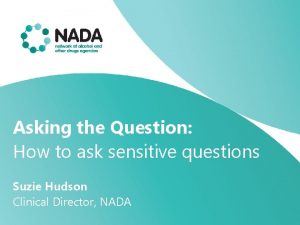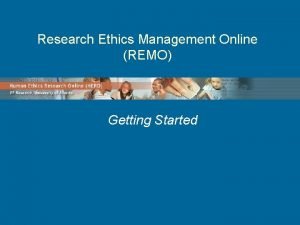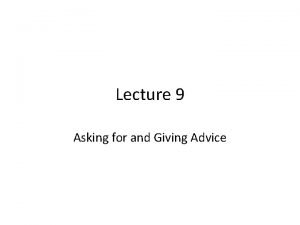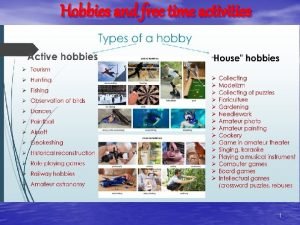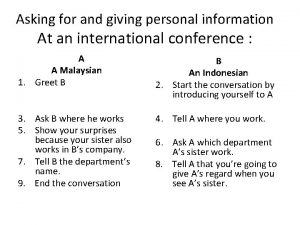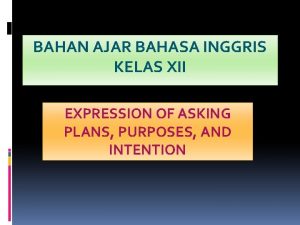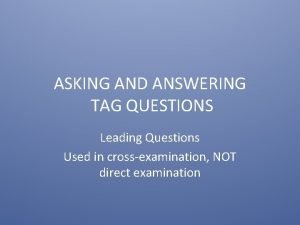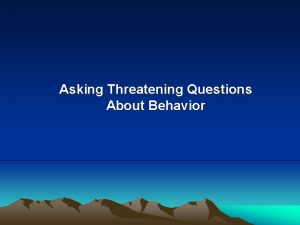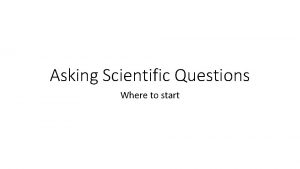Do You Like Asking Questions Do You Like































- Slides: 31

“Do You Like Asking Questions? Do You Like Helping People? Have you Considered Toxicology!“ 2018 SOT Undergraduate Education Program Antonio T. Baines, Ph. D. Associate Professor, Dept. of Biological and Biomedical Sciences Cancer Research Program JLC-Biomedical/Biotechnology Research Institute North Carolina Central University Department of Pharmacology, Curriculum in Toxicology University of North Carolina-Chapel Hill March 10, 2018

What do you see? https: //fair. org/home/talia-buford-on-epa-and-environmental-racism-carey-gillam-on-food-coverage-conflicts/

More than ___ sites released hazardous pollutants due to Hurricane Harvey in Houston https: //www. nytimes. com/2017/09/06/us/harvey-houston-valerobenzene. html? action=click&content. Collection=U. S. ®ion=Footer&module=Whats. Next&version=Whats. Next&content. ID=Whats. Next&module. Detail=undefined&pgtype=Multimedia

What is Toxicology? • The traditional definition of toxicology is "the science of poisons. " • A more descriptive definition of toxicology is "the study of the adverse effects of chemicals or physical agents on living organisms".

Hey, We Family!

My Education/Career Path to Toxicology • B. S. in Biology from Norfolk State University (4 years) • Ph. D. in Pharmacology and Toxicology from the University of Arizona (5. 5 years) • Post-doctoral fellowship in Pharmacology at UNC-Chapel Hill (5 years) • College Professor, Cancer Biologist, Toxicologist in Academia at North Carolina Central University (11 years)

Pop Quiz: What is Toxicology? How is Toxicology involved in our everyday lives?

Chemicals are Ubiquitously Present in Our Environment • Chemicals are natural, biological, or synthetic in origin – Natural (food, metals, minerals) – Biological (toxins from bacteria) – Synthetic (manufactured through chemical processes) • Approximately 100, 000 chemicals are currently in use worldwide. • About 500 new formulations enter the marketplace annually 8

Do you want to smoke? Is this safe? http: //guardianlv. com/2013/12/tobacco-ban-solution-rests-on-shoulders-of-e-cig/

Concerns with Electronic Cigarettes • Studies performed on e-cigarette vapor have detected 31 potentially harmful chemicals (ex. nicotine, formaldehyde, acrolein, etc. , ) • E-cigarettes are linked to acute respiratory diseases, such as asthma and bronchitis • Up to 40 percent of particles emitted by an e-cigarette can be deposited in the deepest area of a youth’s lungs. Sl eiman, M. , et. al. , Environ. Sci. Technol. , 2016, 50 (17), pp 9644– 9651 Thornburg, J. , et al. , (March 2015). RTI Press Publication No. RB-0008 -1503

Deepest Area of the Lungs: Alveolar region

The Key Concept in Toxicology is DOSE Father of Modern Toxicology PARACELSUS — 1564 “All things are poisonous, only the dose makes it non-poisonous. ” (Dose alone determines toxicity)

Beneficial Versus Toxic Effects: It’s All About Dose!

Dose-Response Relationship Effective Dose 100 80 60 40 20 ED 50 1 2 3 5 7 10 Animals Killed (%) Animals Sleeping (%) “The dose makes the difference between a beneficial and a toxic effect” 100 80 60 40 20 Lethal Dose LD 50 10 20 30 Phenobarbital (mg/kg) Log Scale 50 100

Routes of Exposure • The route (site) of exposure is an important determinant of the internal dose, magnitude of toxicity and the organs and tissues affected • Different routes may result in different rates of absorption: – Dermal (skin) – Inhalation (lung) – Oral ingestion (Gastrointestinal) – Injection • Toxic effects may be local or systemic

An Example of Dose and Exposure Fall 2015: Lead levels found higher than the acceptable EPA limit of 15 ppb - ranged from 25 ppb and higher, several exceeded 100 ppb

What Led to the High Lead Levels? http: //www. mlive. com/news/flint/index. ssf/2015/10/watch_live_advisory_committee. html

Guess how many U. S. cities have lead contamination just as Flint, MI?

Guess how many U. S. cities have lead contamination just as Flint, MI? https: //www. ecowatch. com/these-33 -cities-cheated-on-lead-contamination-tests-similar-to-flint-m-1891160461. html

Biotransformation • Major mechanism for terminating the biological activity of chemicals • Occurs in the liver, kidney, lung, and gastrointestinal tract © 2006 Society of Toxicology Liver The LIVER is the primary site of metabolism

What does a Toxicologist do? • Develop mechanistic understanding of effects of toxicants • Ensure safer chemical products • Develop safer drugs & medicines • Determine risks from chemical exposures • Develop treatments for chemical exposures • Ensure a safe food and water supply • Forensics

Toxicology Employment by Sector Other 5% Academia 14% 0% Consulting 13% Industry 46% 0% Government 13% Industry Breakdown Pharmaceutical 66% Chemical 10% Consumer Product 8% Food/Food Ingredients 4% Medical Devices 4% Petroleum 2% Other 6% Contract Laboratory 12% 0% 2014 Data Ninth Triennial Toxicology Survey

Toxicology Employment by Sector Other 5% Academia 14% 0% Consulting 13% Industry 46% 0% Government 13% Industry Breakdown Pharmaceutical 66% Chemical 10% Consumer Product 8% Food/Food Ingredients 4% Medical Devices 4% Petroleum 2% Other 6% Contract Laboratory 12% 0% 2014 Data Ninth Triennial Toxicology Survey

What are the functions of the pancreas? http: //www. olivelab. org/the-pancreas-overview. html

Major Concerns of Pancreatic Cancer • The 5 -year survival rate is 9%, lowest of all major cancers • Most patients are diagnosed at an advanced stage • Most pancreatic cancers are resistant to chemotherapy and radiotherapy • Survival rates have not significantly changed in the past 40 years

Human PIM kinase family Human kinome (518) PIM-1 PIM-2 PIM-3 S/T Kinase 313 311 326 Proviral integration site for the Moloney murine (PIM) leukemia virus 61% 77%

Roles of PIM kinase cell signaling in cancer http: //www. toleropharma. com/TP-3654. html

My working hypotheses

The combination of SGI-1776 (PIM inhibitor) and gemcitabine decreases cell viability in PDAC cells Xu, D. , Baines, A. T. et al. , Cancer Biology & Therapy (2013), vol. 14(6), pp. 492 -501.

Do You Like Asking Questions? Do You Like Helping People? Have you Considered Toxicology!

 Open ended questions examples
Open ended questions examples Whats a tag question
Whats a tag question Look at that kangaroo it is carrying its baby
Look at that kangaroo it is carrying its baby Sponge approach
Sponge approach Observing and asking questions
Observing and asking questions Nadabase
Nadabase Asking scientific questions activity
Asking scientific questions activity Answering questions in spanish
Answering questions in spanish Subscription division tempo magazine can i help you
Subscription division tempo magazine can i help you To take something that doesn't belong to you
To take something that doesn't belong to you Ualberta remo
Ualberta remo Writing a formal email
Writing a formal email Writing a letter requesting information
Writing a letter requesting information Asking and making suggestions
Asking and making suggestions How to enquire about admission
How to enquire about admission Giving advice phrases
Giving advice phrases Signing naturally unit 3 answers
Signing naturally unit 3 answers I know a curious little boy who is always asking why
I know a curious little boy who is always asking why Time conversation questions
Time conversation questions Giving direction map
Giving direction map Asking for and giving personal information
Asking for and giving personal information Asking and giving personal information
Asking and giving personal information Asking and giving permission
Asking and giving permission Dialogue giving directions
Dialogue giving directions Asking and giving advice situations
Asking and giving advice situations Asking giving opinion
Asking giving opinion Asking and giving opinion about bullying
Asking and giving opinion about bullying Asking and giving directions vocabulary
Asking and giving directions vocabulary Asking for help expressions
Asking for help expressions Social function of giving suggestion
Social function of giving suggestion Modul pembelajaran bahasa inggris kelas 12
Modul pembelajaran bahasa inggris kelas 12 Offercore nedir
Offercore nedir





